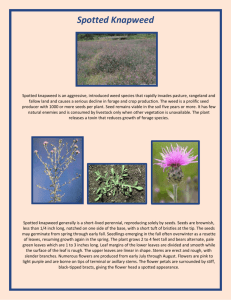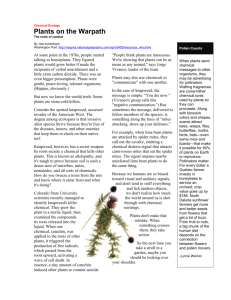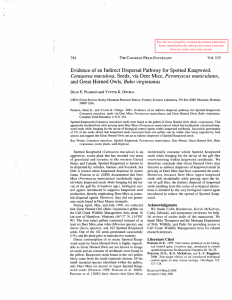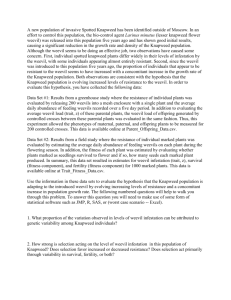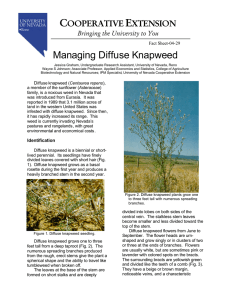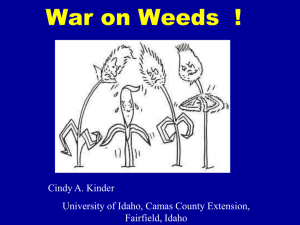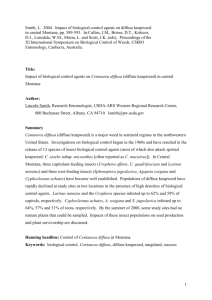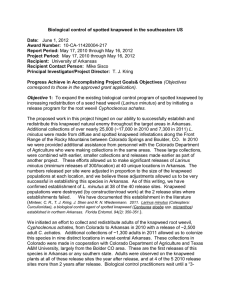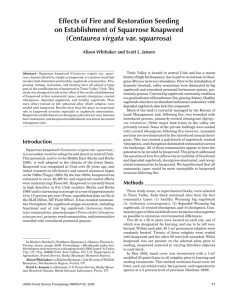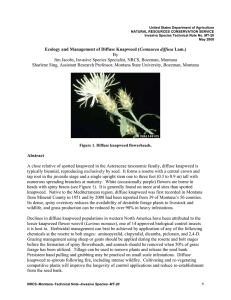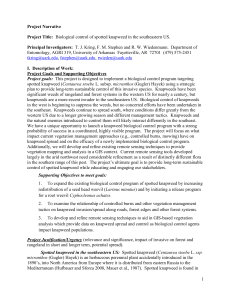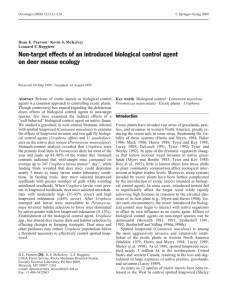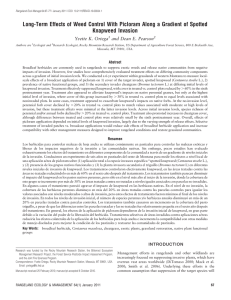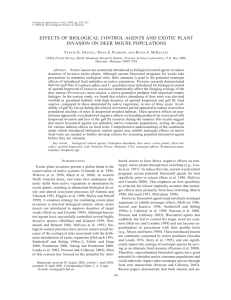Diffuse Knapweed - Johnson County Weed & Pest
advertisement
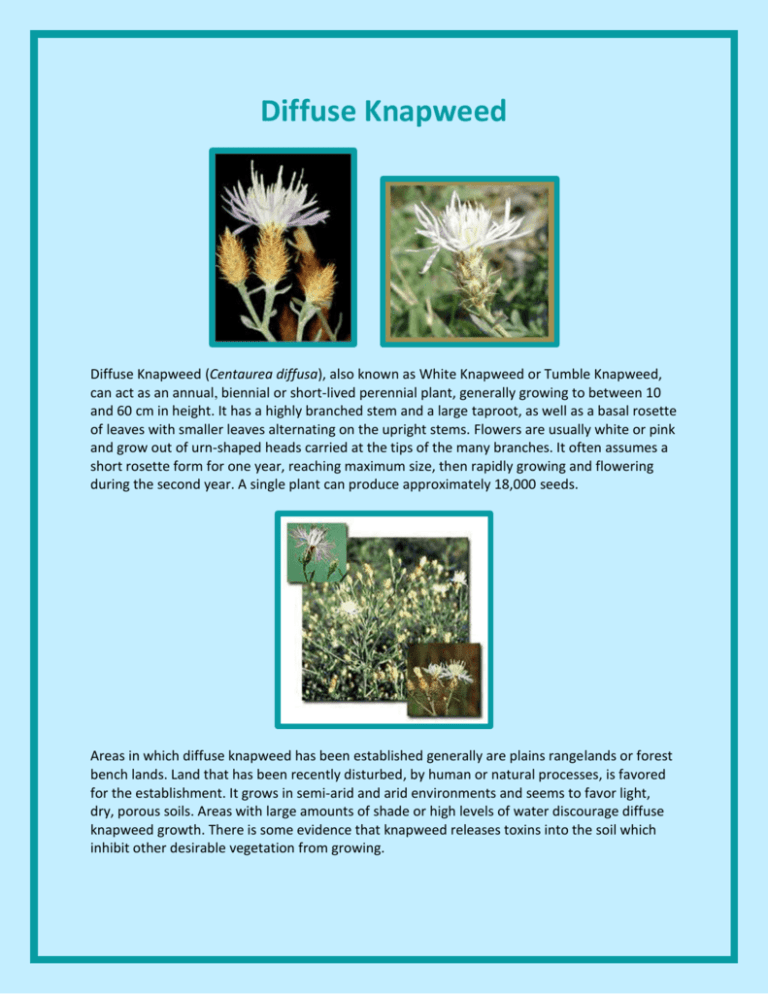
Diffuse Knapweed Diffuse Knapweed (Centaurea diffusa), also known as White Knapweed or Tumble Knapweed, can act as an annual, biennial or short-lived perennial plant, generally growing to between 10 and 60 cm in height. It has a highly branched stem and a large taproot, as well as a basal rosette of leaves with smaller leaves alternating on the upright stems. Flowers are usually white or pink and grow out of urn-shaped heads carried at the tips of the many branches. It often assumes a short rosette form for one year, reaching maximum size, then rapidly growing and flowering during the second year. A single plant can produce approximately 18,000 seeds. Areas in which diffuse knapweed has been established generally are plains rangelands or forest bench lands. Land that has been recently disturbed, by human or natural processes, is favored for the establishment. It grows in semi-arid and arid environments and seems to favor light, dry, porous soils. Areas with large amounts of shade or high levels of water discourage diffuse knapweed growth. There is some evidence that knapweed releases toxins into the soil which inhibit other desirable vegetation from growing. Dispersion occurs in the following ways: Agriculture – alfalfa contaminated with diffuse knapweed seed can promote the spread of diffuse knapweed; Wildlife – wild animals eating the seeds or transporting the seeds on fur; Wind – is the primary means by which diffuse knapweed seeds are spread. Seeds blown out of their capsules held on the plant are distributed over a short range, but when dried out the plant may become a tumbleweed, rolling for great distances and releasing seeds along the way; Water – waterways carry seeds in their flow for long distances before depositing them onto a shore where they germinate. Effective control of diffuse knapweed requires a fusion of well-executed land management, biological control, physical control, chemical control and reestablishment of the native species. Any method of control must ensure that the root is removed or the plant will grow back. Additionally, native plant growth in areas where diffuse knapweed has been removed should be encouraged to prevent reestablishment. Bio-control agents are broke into 2 main groups, seed head agents and root borers. Combinations involving agents from both groups are the most effective at controlling Diffuse Knapweed. Seed Head agents that have been released in Johnson County Bangasternus fausti, Larinus obtusus and L. minutus are seed head weevils – the larvae are very effective at completely mining out individual seed heads; the adults feed on the leaves, stems and florets but prefer flower heads when available. Urphora affinis, U. quadrifasciata, Cheatorellia acrolophi, and Terellia virens are seed head flies- the larvae of all attack the seed heads. Root Boring agents released in the County specific to Diffuse knapweed Sphenoptera jugoslovica- beetle as an adult, larval root feeder Physical control of diffuse knapweed primarily comprises cutting, digging or burning to remove the plants. Cutting - While cutting the aboveground portion of diffuse knapweed will greatly decrease the spread of seeds, it does not remove the root. With only its root still intact, diffuse knapweed can survive and continue to grow. Generally if mowed, it causes the plant to grow flat to the ground and it will still produce seed. Digging - this removes both the portion above ground and the root of diffuse knapweed and has shown to be very effective. Burning - setting fire to a crowd of knapweed, if the fire is sufficiently severe, can successfully destroy the above ground and belowground sections of diffuse knapweed. Chemical control – there are broadleaf herbicides that are effective on diffuse knapweed, however, they must be applied during the vegetative or growth stage to be the most effective. The plant begins hardening off after it has reached its growth potential and sometimes before seed head emergence therefore herbicide applications during this time may not be as effective. County Impact- Diffuse knapweed is primarily scattered in the southern end of the County but is following the Powder River to the North. It has been the focus of a District program for several years but is frustrating to manage due to its aggressiveness and difficulty find & treat timely. It blends in well with other vegetation until you suddenly release there is a major infestation. It thrives in sandy to gravelly soils where desirable vegetation is unable to compete. Johnson County Weed & Pest Control District (307) 684 - 5715
